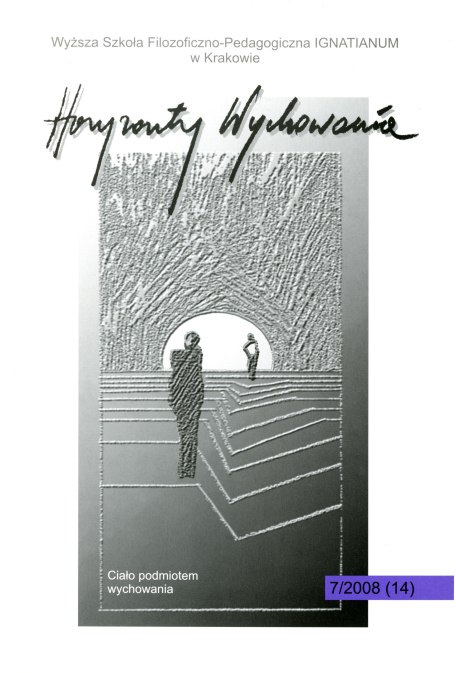Ciało w teatrze – między realnością a fi kcją
Abstract
This article is devoted to the relationship between an actor and a character. This relationship is a basic indicator of theatre whose material is the actor and specifi cally his body. The body of an actor is his basic instrument which is characterised by a double existence which is clear to the viewer. It concerns a double life: two „personalities”, two physical existences, awarenesses, memories and two times: the real and the fi ctitious. Less obvious is the fact that an actor plays a double role at the same time, i.e. as signal material and co-author of the character who communicates with other characters in the fi ctitious world, as well as an equally active element of playwrights’ communication with the audience. That is why, one of the ways to describe the body in the theatre is the semiotics of the theatre, which is an analysis of a performance as a density of sign structure, referring to the space of the body and body techniques as a sign of signs. This article undertakes the problem of the representation of the body in the theatre. For, regardless of the kind of the theatre, the body is always interwoven with meanings. It takes place both in the traditional theatre, where the body is conventionalised, closed in defi nite frameworks of form and convention and in para-theatrical events which abolish the basic opposition between an actor and a character performed by him. Pretending in theatre involves a signalised “recording” by an actor on his own body the perception of the world which belongs to the fi ctitious character who perceives this world from a different time and space viewpoint.Copyright (c) 2017 HORIZONS OF EDUCATION

This work is licensed under a Creative Commons Attribution-NonCommercial-NoDerivatives 4.0 International License.
Authors who publish in this journal agree to the following terms:
- Authors retain the copyright to their work while granting the journal the right of first publication. The work will be simultaneously licensed under a CC BY-ND license, which permits others to share the work with proper credit given to the author and the original publication in this journal.
- Authors may enter into additional, non-exclusive agreements for the distribution of the published version of the work (e.g., posting it in an institutional repository or publishing it in another journal), provided that the original publication in this journal is acknowledged.
We allow and encourage authors to share their work online (e.g., in institutional repositories or on personal websites) both before and during the submission process, as this can foster beneficial exchanges and lead to earlier and increased citations of the published work. (See The Effect of Open Access). We recommend using any of the following academic networking platforms:





